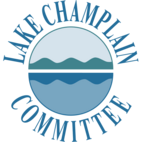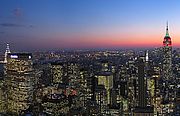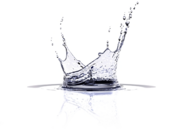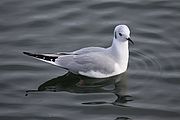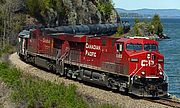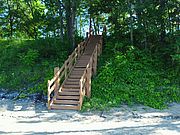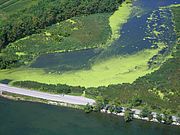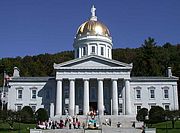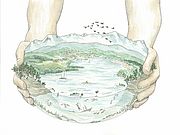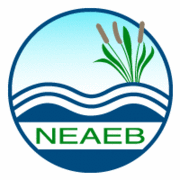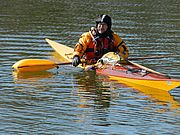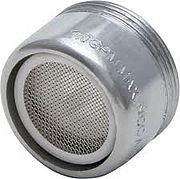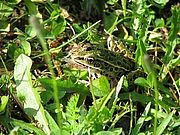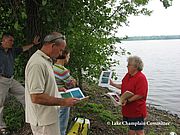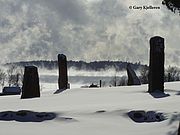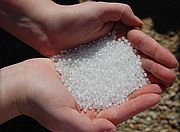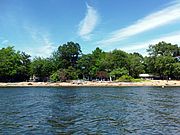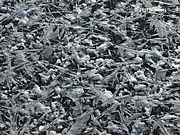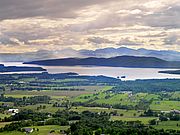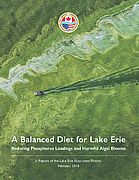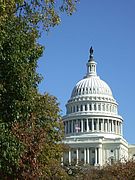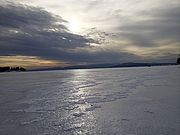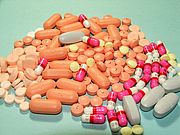The United States Department of Energy has released a Final Environmental Impact Statement (FEIS) for a electric transmission line that would run down the bottom of Lake Champlain and the Hudson River to deliver Canadian hydro-electricity to the New York City area. Read...
News from Selected Month
There are still more warm, drying days ahead before cold fall breezes blow in. Below are a few lawn and garden tips before you put tools away for the season. Read...
While most people are savoring the last few days of summer, many birds have gotten beyond that and are beginning their travels to warmer winter climes. One of the first migrating birds you might encounter on Lake Champlain is the Bonaparte's gull. Read...
Join LCC in Plattsburgh, NY on August 28, 2014 from 7-9 PM for the Oil Train Community Forum. A panel of experts and partner organizations will be discussing risks oil trains pose to the North Country and steps community, state and federal governments need to take to respond to and prevent disasters. Read...
Blue-green algae blooms have begun developing on Lake Champlain, particularly in the shallow northeastern bays – Missisquoi and St. Albans. Blue-green algae thrive in nutrient-rich water and can multiply rapidly to form blooms and scums. Read...
The sound of trains clacking along the rails that abut Lake Champlain has become more common recently with the dramatic increase in freight traffic attributed to fossil fuel extraction. Read...
In the midst of another spring of high water we remember the floods of 2011 that brought widespread devastation to the Champlain Basin. A large snow pack and extensive spring rains swelled Lake Champlain to a record height of 103.27 feet above sea level. Read...
Vermont has been working on revising a lake clean-up budget as directed by the Environmental Protection Agency. What are the chances that the budget will lead to a cleaner lake? Read...
In the 2014 Vermont Legislative session the legislature debated bills to increase requirements for protecting lake shores, regulate toxic chemicals and provide more funding for water quality projects. Read...
In late March, LCC joined with a number of other organizations interested in lakes and rivers to discuss ways to advance water quality policy in Vermont. Read...
The 2014 Lake Champlain Paddlers' Trail Guidebook will be out soon. This year's edition is filled with important information for great adventures on the water. MORE Read...
How much information can you convey in five minutes? That was the challenge presented at the Slam session of the recent meeting of the New England Association of Environmental Biologists. Read...
Even if air temperatures seem balmy, the lake takes much longer to warm up. Additionally, strong currents and springtime debris are potential marine hazards this time of year. MORE Read...
Why conserve water in a wet environment like the Lake Champlain basin? Wasted water contributes to lake pollution. MORE Read...
The high waters of early spring flood low-lying forested areas offer an excellent opportunity to maneuver your kayak or canoe through the trees and button bush of floodplains and back waters. Flooded navigable habitat can be found at the mouths of most major creeks and rivers along the lake. MORE Read...
Help assess Lake Champlain water conditions around the lake this summer as a blue-green algae monitor. The following monitor training sessions are free and open to the public. Stay tuned for additional dates and locations of other upcoming training sessions. Read...
Winter in the Lake Champlain watershed brought abundant snow and ice this year. Before we fully embrace spring, we thought we'd share with you some great visuals taken by LCC members and supporters on their explorations on and around the lake. MORE Read...
The lake clean-up plan known as a TMDL has been the subject of intense debate over the last year. EPA is in the process of developing a pollution budget while Vermont is responsible for outlining an implementation plan for meeting that budget. MORE Read...
The Lake Champlain Committee, along with the Conservation Law Foundation, Vermont Natural Resources Council and Lake Champlain International, held a press conference at the State House in Montpelier last month asking Governor Shumlin to provide leadership to protect and restore Vermont’s waterways. MORE Read...
Plastics are everywhere. Try shopping for household goods and not coming home with plastic products. It’s almost impossible. Plastic does not degrade easily, yet so many plastic products are designed to be thrown away. Given that, it should come as no surprise that plastics are ending up in waterways. MORE Read...
In early February the Vermont Senate passed legislation to protect Vermont shorelands. Over the summer, legislators traveled around the state and held a series of public meetings to hear concerns about the bill. MORE Read...
LCC, the US Environmental Protection Agency and other WaterSense partners are promoting a week focused on water conservation. Wasting water wastes energy and money and can contribute to lake pollution. More than one trillion gallons of water are lost annually in the U.S. due to easy-to-fix household leaks. MORE Read...
For the first time since 2007 Lake Champlain froze over. According to the records kept by the National Weather Service, ice cover used to be a fairly common event. View a slideshow of ice images. MORE Read...
Climate change trends pose threats to the Lake Champlain watershed and Lake Champlain's water quality. Using the notion that "two heads are better than one," the University of Vermont (UVM) and Vermont EPSCoR's Research on Adaptation to Climate Change (RACC) seek to "crowdsource" solutions to these threats. MORE Read...
After the lake freeze, the few pockets of open water on Lake Champlain became magnets for the winter ducks, gulls, and eagles that stuck around and braved the frigid temperatures. MORE Read...
You can view the lake year-round even when you're not lakeside with LCC's color note cards. An eight-card set includes two cards each of four different beautiful lake scenes. At $10 for members, $14 if you haven't joined yet, they're a great deal. MORE Read...
Lake Champlain isn’t the only waterbody facing excessive phosphorus loading. In February, the International Joint Commission (IJC) released a report offering scientific and policy advice to governments as they implement plans to respond to deteriorating Lake Erie water quality. MORE Read...
The Environmental Protection Agency (EPA) portion of Lake Champlain restoration funding was cut by over a million dollars, from $2,432,000 in 2013 to $1,399,000 for 2014. For over 20 years these annual federal appropriations have supported critical restoration, research, and monitoring programs on the lake. MORE Read...
In late November Vermont released a new “Proposal for a Clean Lake Champlain.” The public comment period for the proposal ended on January 17th. LCC and EPA were among 42 individuals and organizations to weigh in on the state plan.
LCC noted that the state “put forth a robust suite of activities that will go a long way to better managing water resources.” MORE Read...
Drugs are making their way from our medicine cabinets into our waters, and traces of pharmaceuticals have been found in the environment. Drugs may pass through our bodies unchanged or unused pills may be dumped down the toilet. Wastewater treatments systems were not designed to remove pharmaceuticals, and their ultimate environmental fate is unclear. MORE Read...
